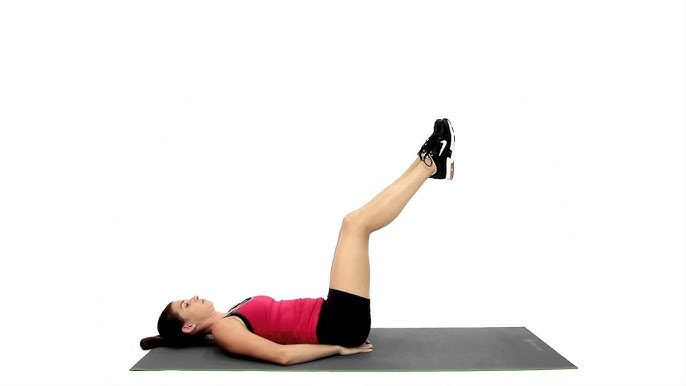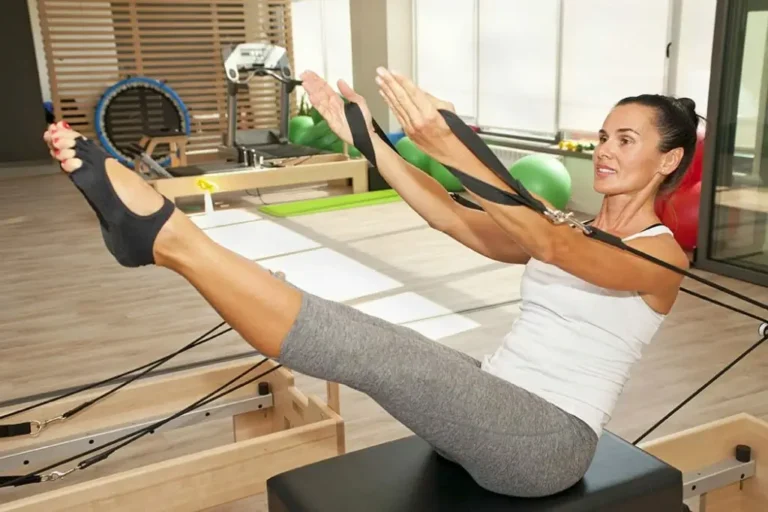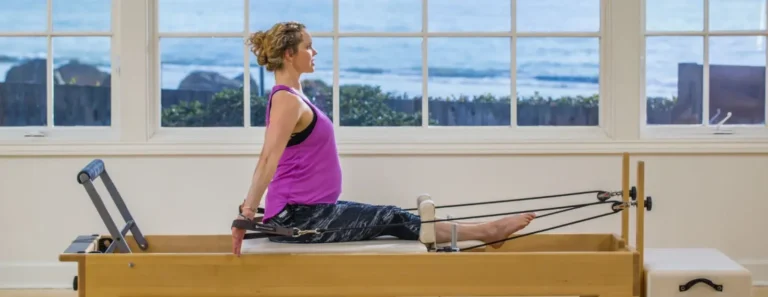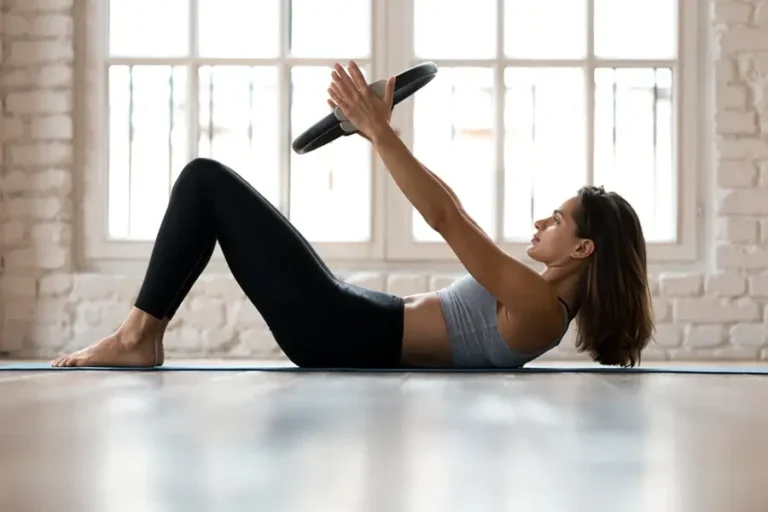How to Do Double Leg Lift in Pilates? A Comprehensive Guide
The Double Leg Lift Pilates mat exercise, also known as Mermaid, Lower Lift, or Double Straight Leg Stretch, stands as a versatile and effective abdominal workout targeting both the upper and lower abs. In this guide, we’ll explore the benefits, step-by-step instructions, common mistakes to avoid, and modifications to cater to different fitness levels.
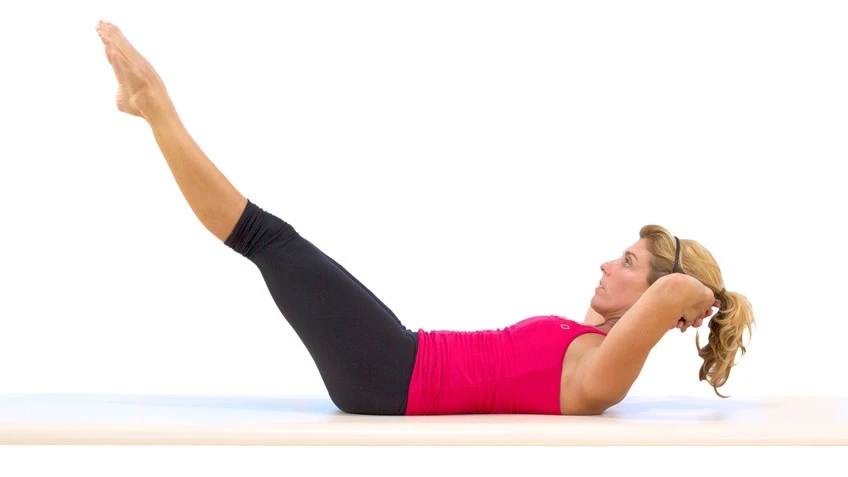
Benefits of Double Leg Lift in Pilates
This Pilates exercise isn’t just about building a six-pack; it’s a holistic core strength builder. The key benefits include:
- Engagement of Upper and Lower Abs: The exercise effectively targets both upper and lower abdominal muscles, providing comprehensive core activation.
- Involvement of Hip Flexors: Particularly the sartorius muscles, adding an extra dimension to the workout.
- Activation of Quadriceps and Gluteal Muscles: The exercise engages these muscles, contributing to overall leg strength and toning.
- Improved Breathing Technique: As your abs work hard, it’s an excellent opportunity to practice deep breathing into your back and sides, promoting better respiratory control.
- Enhanced Core Strength for Posture: A strong core, developed through consistent practice, plays a crucial role in maintaining good posture and ease of movement in daily life.
Step-by-Step Instructions
Follow these precise steps to ensure you perform the Double Leg Lift with proper form:
- Starting Position: Lie on your back with legs extended towards the ceiling, slightly rotated outward, heels together, and inner legs aligned in a Pilates stance. Place hands behind your head, keeping elbows wide and chest open.
- Inhale and Exhale: Inhale, then on the exhale, engage your core, pressing your lower back into the mat as you lift your upper torso off the floor. Maintain this core strength position.
- Leg Movement: Inhale again, keeping the abs pulled in, lengthen your legs out of your hips, slowly lowering them. The lowering phase should take more time than the lifting motion.
- Pause and Return: Pause when your legs are lowered without compromising control and alignment. Exhale, lift your legs back to the upright position, deepening the abs.
- Check Your Position: Throughout the exercise, ensure you maintain a Pilates stance, open chest, wide elbows, and engaged abdominals.
- Repeat: Perform the exercise 6 to 8 times to complete a set.
Common Mistakes to Avoid
To gain the maximum benefit from the Double Leg Lift, steer clear of these common mistakes:
- Lower Back Arching: Avoid letting your lower back peel off the mat during leg lowering. Keep control and engage your powerhouse to prevent strain.
- Head and Neck Strain: Do not pull up your head or neck with your arms. Use your upper abs to lift the chest, leaving the head down if needed.
Modifications and Variations
Modifications for Accessibility:
- Head Down Option: If building strength or experiencing neck discomfort, leave your head down with arms stretched along your sides, palms down.
- Hands Under Hips: To alleviate lower back pressure, try placing your hands under your hips.
- Bent Knees: If maintaining straight legs is challenging, perform the exercise with slightly bent knees until sufficient strength is built.
Challenging Variations:
- Side Double Leg Lifts: Progress to this variation once you’ve mastered the basic form.
- Pilates Scissors: Explore this advanced variation to add further challenge to your routine.
Safety and Precautions
- Consultation for Special Conditions: Individuals with osteoporosis or spondylitis should consult with their doctor or physical therapist before attempting this exercise.
- Pregnancy Consideration: As with most supine ab exercises, this one is not recommended during pregnancy. Check with a healthcare professional for suitable alternatives.
- Addressing Neck Strain: If neck strain is felt, focus on form or perform the exercise with the head on the mat until sufficient ab strength is developed.
Incorporate the Double Leg Lift into your Pilates routine with precision and intention, adjusting based on your fitness level and comfort. Consult your Pilates instructor for personalized modifications and enjoy the transformative impact on your core strength.
FAQs
1 What is the Double Leg Lift in Pilates?
- The Double Leg Lift is a Pilates mat exercise designed to target both the upper and lower abdominal muscles. It involves lifting both legs simultaneously, contributing to core strength and flexibility.
2 Is the Double Leg Lift suitable for beginners?
- Yes, the Double Leg Lift is beginner-friendly while still offering a challenging workout. It is an excellent exercise for building core strength, making it accessible to individuals at varying fitness levels.
3 What muscles does the Double Leg Lift target?
- This exercise primarily targets the upper and lower abdominal muscles, engaging the hip flexors, quadriceps, and gluteal muscles. It provides a comprehensive core workout.
4 Can the Double Leg Lift be modified for different fitness levels?
- Yes, modifications are available to accommodate different fitness levels. Beginners can leave their heads down on the mat, and variations such as side double leg lifts offer challenges for those seeking a more advanced workout.
5 How do I avoid common mistakes while performing the Double Leg Lift?
- To prevent common errors, ensure you do not arch your lower back excessively during leg lowering. Additionally, avoid pulling up your head or neck with your arms. Focus on controlled movements and maintaining proper form.
6 How many repetitions of the Double Leg Lift should I perform?
- A recommended starting point is to perform the exercise for 6 to 8 repetitions in a set. Adjust the number based on your fitness level, gradually increasing as you become more comfortable with the movement.
7 Can the Double Leg Lift be performed during pregnancy?
- As with most supine ab exercises, it is advisable to avoid the Double Leg Lift during pregnancy. Pregnant individuals should consult with healthcare professionals for suitable alternatives.
8 Are there variations to the Double Leg Lift for an added challenge?
- Yes, once you’ve mastered the basic form, you can explore variations such as side double leg lifts or progress to more advanced exercises like Pilates scissors to intensify your workout.
9 What safety precautions should be taken when doing the Double Leg Lift?
- Individuals with osteoporosis or spondylitis should consult with their doctor or physical therapist before attempting this exercise. If neck strain is experienced, focusing on form or performing the exercise with the head on the mat is recommended.
10 How can I incorporate the Double Leg Lift into my Pilates routine effectively?
- To incorporate the Double Leg Lift, follow the step-by-step instructions carefully, paying attention to form and breathing. Consulting with a Pilates instructor for personalized guidance can enhance your overall experience.

